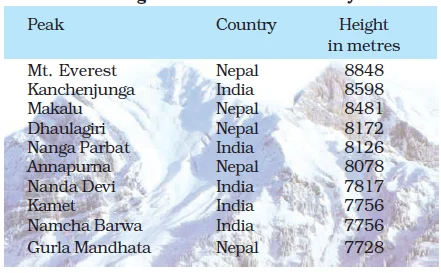![]() 20 Jun 2024
20 Jun 2024
The Earth has transformed over time due to endogenic and exogenic forces shaping its surface and subsurface features. For instance, The Indian plate, once located south of the equator and part of a larger entity including the Australian plate, fragmented over millions of years. The Australian plate moved southeastward, while the Indian plate moved northward, a movement that continues today.
This resulted in the creation of the region’s present geological features and divisions, showcasing the geographical diversity of India. In this Article, these geological and physiographic divisions of India will be discussed.

Physical Features of India

The Himalayas
Physiography, the result of geological structure, ongoing processes, and developmental stages, showcases India’s diverse physical features.
(1) The Northern and North-eastern Mountains
(2) The Northern Plain
(3) The Peninsular Plateau
(4) The Indian Desert
(5) The Coastal Plains
(6) The Islands.

Some Of The Highest Peaks Of The Himalayas
|
POINTS TO PONDER The Himalayas exhibit a pattern when we move from west to east. The Peaks start getting higher and the horizontal distance between the three Himalayan ranges i.e. Upper, middle and lower start diminishing and the distinction among the three starts fading away. Can you find out the reason for the same? |
|---|

| Must Read | |
| Current Affairs | Editorial Analysis |
| Upsc Notes | Upsc Blogs |
| NCERT Notes | Free Main Answer Writing |
<div class="new-fform">
</div>